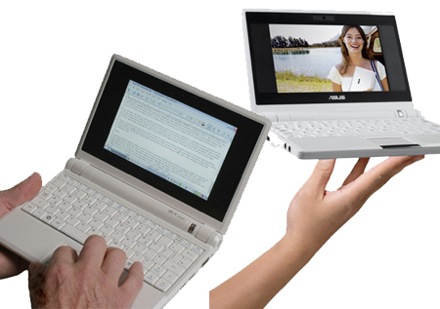Attack of the Network Minnows: Netbooks conquer the market
 Hanover, Germany - When the CeBIT rolled out in March 2008, nobody had an answer to the small yet affordable Asus EeePC.
Hanover, Germany - When the CeBIT rolled out in March 2008, nobody had an answer to the small yet affordable Asus EeePC.
The market has rushed to fill the gap in the interim, however, with several new devices seeking to make headway in the netbook market. Devices in this class are designed to have dimensions comparable to a sheet of paper and weigh just one kilogramme, yet cost a fraction of their similarly dimensioned cousins, the subnotebook.
Even so, buyers must make clear sacrifices in terms of options and performance.
German hardware maker Brunen IT follows closely in the footsteps of the original EeePC with its One A110, a unit that featured a 7 inch display and the Linux operating system. Offered at the eye-popping price of 199 dollars, the device is over 100 dollars cheaper than its predecessor, with 512 Megabytes (MB) of RAM and 2 Gigabytes (GB) of internal memory in the place of a hard drive. The One has a VIA C7 M chip at its heart, while the Asus is based on Intel's Celeron M processor. The device is intended for surfing, communication, and simple office tasks.
The series' thin construction allows for a long battery life. Regardless of which operating system is used, the A100 minis achieve roughly five hours of running time when used for non-intensive computing and with low monitor brightness, a test by Hanover-based c't magazine showed. The A150 comes delivered with 60 GB of hard drive space, 1 GB RAM, and Windows XP Home for 289 dollars. Packard Bell is still offering its 7 inch EasyNote XS netbook, including Bluetooth on board.
Users who just can't handle the tiny 7 inch monitor and its low resolution should consider a 9 inch model. The current EeePC 900 from Asus (399 dollars) provides not only a bigger display, but also an improved touchpad, Windows XP Home and 12 GB of internal storage space. The restraints have been removed from the Celeron M. which now runs up to its full 900 Megahertz (MHz). A 901 model is already being designed to use an energy-saving Intel Atom processor.
An Atom chip was already in the 9 inch Aspire One netbook that Acer sent onto the market in July. It comes with WLAN standard and can be upgraded with a UMTS module. The manufacturer gives One purchasers the choice of 8 GB of internal storage or 80 GB of hard drive capacity. The RAM is available in either 512 or 1 GB versions. Users can also choose between Linpus Linux and Windows XP Home as their operating system.
The units cost between 300 and 400 dollars.
Soon, nine inch netbooks will be available from HP, Dell and Fujitsu Siemens. Gigabyte will soon be launching its own netbook. At more than 500 dollars, it is considered somewhat expensive for this category, but it offers an Atom CPU, 160 GB of hard drive space as well as a rotating and tilting touchscreen - making it perfect for tablet PC use.
The upper end of the Netbook category is currently filled through 10 inch devices weighing in at 1.2 kilogrammes. Medion is pushing one such unit under the name Akoya Mini E1210 for 399 dollars. While the device comes with good standard features, the device did not convince testers at Stiftung Warentest, a German consumer testing organization.
"The small battery (3 cell) just didn't keep the netbook running long enough. The short two hour battery life makes this netbook ill-suited to be a mobile companion." (dpa)